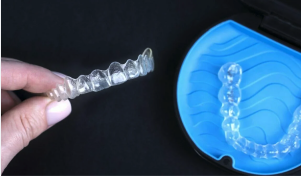While traditional fillings have been the go-to solution for repairing damaged teeth for decades, composite bonding offers several advantages that make it a better choice for many patients. Not only does composite bonding provide a more natural-looking appearance, but it is also more durable and long-lasting.
In this blog post, we’ll explore the benefits of composite bonding over traditional fillings, and provide you with all the information you need to make an informed decision about your dental treatment options.
We will explain what composite bonding is, how it differs from traditional fillings, and highlight the many benefits of this popular dental procedure. By the end of this blog post, you will have a better understanding of why composite bonding may be the right choice for you.
What Exactly Is Composite Bonding, And How Does It Differ From Traditional Fillings?
Composite bonding is a cosmetic dental treatment that involves the application of a tooth-coloured resin material to the teeth. Unlike traditional fillings, which are made from metal or amalgam, composite bonding mimics the natural colour of the tooth, making it an ideal treatment option for those looking for a more natural appearance.
Advantages Of Composite Bonding
One of the main advantages of composite bonding is its natural appearance. The resin material used in composite bonding can be colour-matched to the surrounding teeth, making it almost impossible to distinguish from the natural tooth. This means that patients can enjoy a more natural-looking smile without the need for invasive treatments such as crowns or veneers.
Another significant advantage of composite bonding is its durability. While traditional fillings tend to wear down over time and can break or crack, composite bonding is more resistant to wear and tear. This means that patients can enjoy a longer-lasting, more reliable treatment option for their dental issues.
The Composite Bonding Procedure
If you’re considering composite bonding as a treatment option, you may be wondering what to expect during the procedure. The process typically involves the following steps:
- The dentist will examine the tooth and determine the best course of action.
- Any decayed or damaged areas of the tooth will be removed, and the tooth is prepared for bonding.
- A bonding agent is applied to the tooth, which helps the composite resin material adhere to the tooth surface.
- The resin material is applied to the tooth in layers, shaping and sculpting it to match the natural contours of the tooth.
- A special light is used to harden the resin material, making it strong and durable.
- The tooth is polished, ensuring that it blends in seamlessly with the surrounding teeth.
How Long Does Composite Bonding Last?
The lifespan of composite bonding can vary depending on several factors – including the patient’s oral hygiene habits and the extent of the damage to the tooth – but in general, composite bonding typically lasts between 5-7 years. With proper care, however, it can last much longer.
Drawbacks Or Potential Risks To Choosing Composite Bonding
As with any dental procedure, there are potential risks to choosing composite bonding. One potential drawback is that the resin material used in composite bonding is more prone to staining than natural teeth, so patients may need to avoid certain foods and beverages to prevent discolouration. Additionally, composite bonding may not be suitable for patients with extensive damage to the tooth, as it may not be strong enough to support the tooth’s structure.
Does Composite Bonding Hurt?
The procedure is typically painless, but you can be given a local anaesthetic to numb the area if necessary. After the procedure, patients may experience some mild discomfort or sensitivity, but this typically resolves within a few days.
Caring For Your Teeth After Composite Bonding
After your composite bonding procedure, it’s essential to care for your teeth properly to ensure that the bonding material remains strong and durable. This includes brushing twice daily with a fluoride toothpaste, flossing daily, and avoiding hard or sticky foods that could damage the bonding material. Regular dental check-ups and cleanings are also essential to maintain good oral health and identifying any issues with your composite bonding or other dental work.
Composite Bonding On Overlapping Teeth And Crooked Teeth
Composite bonding can be an excellent treatment option for anyone with overlapping or crooked teeth. By applying the resin material to the surface of the tooth, your dentist can reshape and sculpt the tooth, creating a more even, uniform appearance. While composite bonding is not a replacement for orthodontic treatment, it can be an effective way to improve the appearance of teeth and create a more harmonious smile.
Final Thoughts
Composite bonding is a versatile, effective, and natural-looking treatment option for a wide range of dental issues. Whether you’re looking to repair a cavity, fix a chipped tooth, or improve the overall appearance of your smile, composite bonding can provide a long-lasting, reliable solution. While there are potential risks and drawbacks to the procedure, these are generally minimal and can be mitigated with proper care and maintenance.
Contact Ollie & Darsh Today.
If you’re interested in learning more about composite bonding or other dental treatments, Ollie & Darsh offers a comprehensive range of services to help you achieve a healthy, beautiful smile. Contact us or book online today to schedule an appointment and take the first step towards a happier, healthier you.

